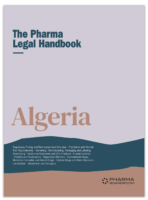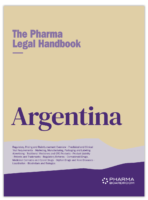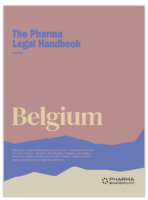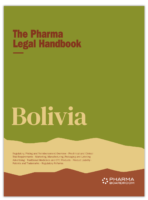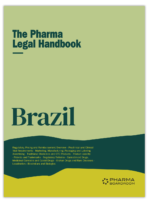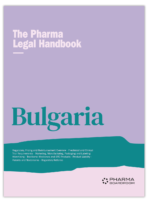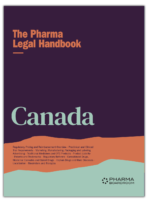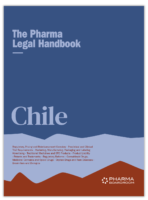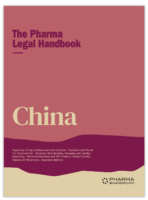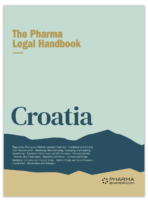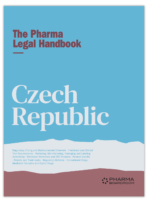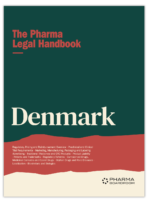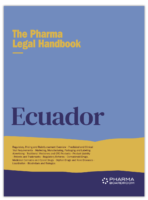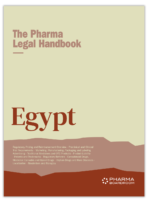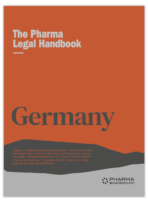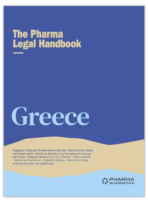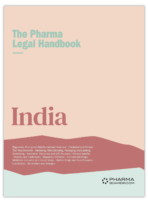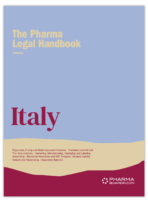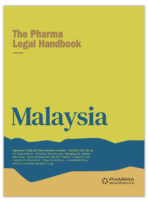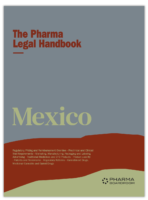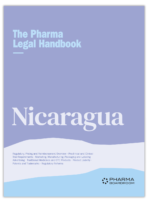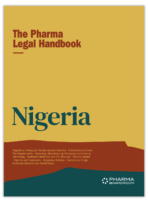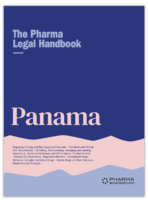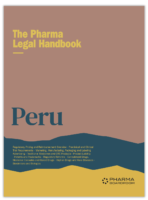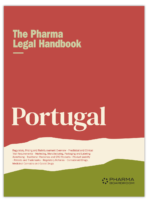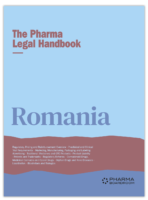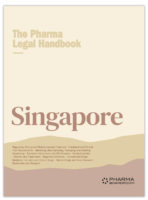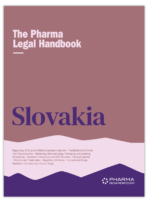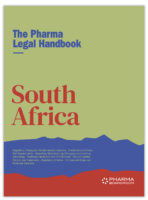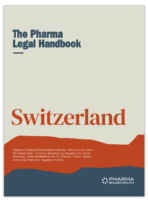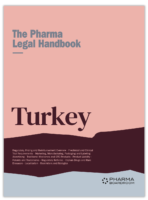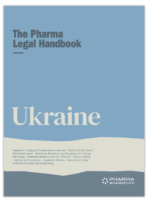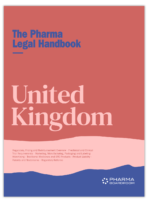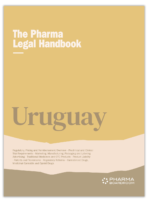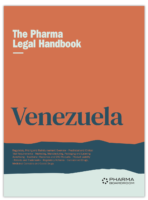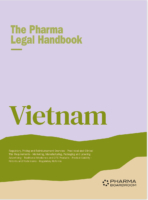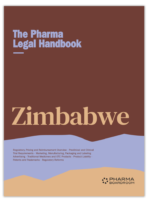Marketing, Manufacturing, Packaging & Labeling, Advertising: China
Fangda Partners / China
A brief overview of the situation regarding marketing, manufacturing, packaging & labeling and advertising within Chinese pharma. Prepared in association with Fangda Partners, one of China’s most prestigious and well-regarded law firms. This is an extract from The Pharma Legal Handbook: China, which can be purchased here for GBP 99.
1. What is the authorization process for the marketing of new drugs, biologics, medical devices, over-the-counter medications, and other medicinal products?
Please refer to Questions 3 & 6 of the Regulatory, Pricing and Reimbursement article regarding the authorization of drugs and medical products.
2. What is the authorization process for the marketing of generic versions of these products?
Please refer to Question 6 of the Regulatory, Pricing and Reimbursement article regarding the authorization of generic drugs.
3. What are the typical fees for marketing approval?
Please refer to Question 4 of the Regulatory, Pricing and Reimbursement article regarding the fees for marketing approval of different products.
4. What is the period of authorization and the renewal process?
Please refer to Question 5 of the Regulatory, Pricing and Reimbursement article regarding the fees for marketing approval of different products.
5. What are the requirements, if any, for post-approval pharmacovigilance?
The key regulation for China’s ADR monitoring system is the Pharmacovigilance Quality Management Specifications. A marketing authorization holder (“MAH”) is required to report all serious ADRs they learn of to the competent ADR monitoring center within 15 days and non-serious reactions within 30 days.
With regard to an overseas-marketed drug, in the event of a sale or use suspension or withdrawal of such drug from the market under the order of the foreign drug regulatory authorities for the reason of an adverse drug reaction, the relevant MAH shall notify the NMPA and adverse drug reaction monitoring center of the applicable information within 24 hours as soon as it has been aware of the event.
6. Are foreign marketing authorizations recognized?
Foreign marketing authorizations are generally not recognized in China. All drugs and medical devices must be approved by the NMPA before they are able to be commercialized in China.
In certain pilot regions, such as Hainan province, foreign medical devices and the small amount of medicines urgent for clinical use are allowed to be imported without obtaining marketing authorization from the NMPA and used in designated institutions for designated treatment purposes upon the permission from competent authorities.
The Greater Bay Area aims to establish a regulatory regime by 2022, which allows the medical institutions in the Greater Bay Area to have access to drugs and medical devices that have been granted marketing authorizations in Hong Kong and Macau.
7. Are parallel imports of medicines or devices allowed?
Current PRC laws contain no provisions that directly address the legality of parallel imports of medicines or devices. It is advisable for market participants to note the following rules in relation to parallel imports:
- Patent. The PRC Patent Law is basically the only piece of PRC legislation that explicitly allows parallel import: Article 69.1 expressly states that any use, offer for sale, sale or import of patented products or products produced through patented process which have already been sold by the patent owner or licensee does not constitute patent infringement.
- Trademark. In terms of trademark protection, PRC law does not explicitly address the issue of whether parallel import is allowed or not. Some court decisions have followed the principle of international exhaustion – that the first sale of the goods to a purchaser abroad exhausts the trademark right in China when certain conditions are satisfied (once the trademark rights are exhausted, the registered trademarks owner will no longer have the right to prevent the importation or distribution of the relevant goods); whilst other courts ruled that the first sale of the trademarked goods must occur within China.
- Marketing authorization. Notwithstanding the ambiguity of parallel import under IP-related laws, it is certain that imported medicines or devices must have the necessary marketing authorizations.
Parallel import is not an urgent issue for the drug industry in China, because multinational corporations must participate in the tender process for supplying drugs to public hospitals (which account for a majority share in China’s drug market, especially for prescription drugs) through their national exclusive distributor in China, which effectively precludes any other parallel importers from supplying drugs to public hospitals. On the other hand, pharmaceutical companies can also rein in or prevent parallel importing by controlling the supply chain – for example, the agreements between a pharmaceutical company and its distributors may contain clauses on territorial limitations and non-competing obligations; importers in China may also request an exclusive distribution right and ask the drug or devices’ manufacturers to take actions to prevent parallel import.
8. What are the restrictions on marketing practices such as gifts, sponsorships, consultancy agreements, travel and entertainment, or other incentives for healthcare organizations and individual medical practitioners?
ADMINISTRATIVE PENALTY AND INDUSTRY PRACTICE
According to the PRC Anti-Unfair Competition Law, China’s major legislation on unfair competition acts and commercial bribery, commercial bribery is dishonest behavior by which a person or an entity gives money or something valuable in order to secure a transaction opportunity or an advantage over other business competitors to the following persons: (i) employees of the counterparty to a transaction; (ii) any person who acts as an agent of the counterparty to a transaction; (iii) any person who has the power or influence on a transaction. The penalties for commercial bribery include a fine of up to RMB3 million, confiscation of illegal proceeds from corrupt transactions and the revocation of the business license.
Furthermore, the Code of Practice on the Promotion of Pharmaceutical Products issued by the R&D-based Pharmaceutical Association in China (RDPAC), which has been voluntarily adhered to by member pharmaceutical companies as the general baseline practices for drug promotion in China, specifically stipulates the following requirements:
- Healthcare professionals shall not generally be paid in cash and gifts for personal benefit.
- Sponsorship is only allowed for events with the purpose to provide scientific or educational information, which must be held at an appropriate venue that is conducive to such purpose.
- To engage healthcare professionals as consultants or to perform other services, a written agreement must be prepared in advance to specify the basis for payment, which shall be reasonable and in accordance with the fair market value.
CRIMINAL PENALTY
Bribing someone may also constitute a criminal crime (official bribery or commercial bribery).
Official bribery is the criminal offence of giving, accepting, soliciting or introducing a bribe to or by state functionaries. If the offeror is an individual and the recipient is a government-related entity, such as a government agency or state-owned enterprise, the threshold for prosecution is RMB100,000; if the offeror is a legal entity, the threshold for prosecution is RMB200,000 regardless of whether the recipient is an individual or not.
Commercial bribery includes giving a bribe and accepting a bribe. In this context, none of the parties involved is government-related. With respect to the crime of giving a bribe, the threshold for prosecution is RMB60,000, if the offeror is an individual, and RMB200,000, if the offeror is an entity. The threshold for prosecution of the crime of accepting a bribe is RMB60,000 regardless of whether the offeror is an individual or not. Accepting a bribe by a private-owned entity shall not constitute a criminal offense.
9. How is the manufacturing of medicines and devices regulated and by which agencies?
The manufacturing of medicines and devices is regulated by the NMPA and the manufacturing process should be conducted in conformity with China’s Good Manufacturing Practices (“GMP”).
10. Are local manufacturing requirements compatible with Good Manufacturing Practices (GMPs) as defined by the U.S. Food & Drug Administration and/or the European Medicines Agency?
Most of China’s current statutes of GMP for drugs are compatible with the GMP provisions of the United States but have their own characteristics as well. According to the Agreement between the Department of Health and Human Services of the United States of America and the State Food and Drug Administration of the People’s Republic of China on the Safety of Drugs and Medical Devices, entered into on December 11, 2007, the two countries agree to formulate details of collaboration on the establishment of internationally recognized standards in the form of work plans. These standards may include the ICH Guidelines, including ICH Q7A Good Manufacturing Practice Guideline for Active Pharmaceutical Ingredients.
11. What is the inspection regime for manufacturing facilities?
Regular inspection and spot checks may be conducted by the NMPA or its local counterparts during the whole drug manufacturing process, including: (i) set-up of new manufacturing site; (ii) NDA approval; and (iii) post-marketing manufacturing of drugs.
12. Are manufacturing facilities open for inspection by foreign inspectors or third-party inspectors as authorized by the FDA/EMA?
Yes. According to the Implementing Arrangement between the Food and Drug Administration of the Department of Health and Human Services of the United States of America and the China Food and Drug Administration of the People’s Republic of China regarding the Cooperate Mechanism of Regulatory Staff, the U.S. FDA may conduct inspections in China to assess the compliance with relevant U.S. requirements of facilities that are engaged in manufacturing, producing, processing, packing, testing, holding, transporting, or distributing any drug intended for export to the United States or its territories. In support of these inspections, the FDA may also collect and analyze product samples.
The U.S. FDA has a China office to conduct inspections at facilities that manufacture FDA-regulated goods.
13. What are the requirements for storage, packaging, and handling of medicines and devices and their constituent components?
Storage, packaging, and handling of medicines and devices must comply with the Good Supply Practice for Drugs and Good Supply Practice for Medical Devices, respectively, which set out the minimum standards for the quality management systems of drug and device distribution in China. For example, the Good Supply Practice for Drugs requires that a drug trading company should be equipped with a comprehensive computer information system, a warehouse with temperature and humidity auto-monitoring systems and qualified quality management personnel.
14. What information must be included in medicine and device labeling?
The label of a drug shall bear the name, ingredients, specifications, the manufacturing enterprise, approval number, product batch number, date of production, expiry date, suitability for symptoms or main function, methods of use, dosage, contraindications and side-effects.
Regarding medical devices, the label shall contain the following information:
- General name, type and specification of the medical device;
- Manufacturer’s name, domicile, production address and contact details;
- Number of technical requirements;
- Production date and service life or expiry date;
- Performance, main structure and scope of application of the product;
- Contraindications, precautions and other necessary warnings or prompts;
- Instruction or diagrammatic presentation for installation and use of the product;
- Maintenance and repair methods, as well as the special storage conditions and method;
- Other particulars that should be indicated in the technical requirements.
15. What additional information may be included in labeling and packaging?
For drugs requiring special storage, the requirements shall be marked on the label. For narcotic drugs, psychotropic substances, medicinal toxic drugs, radioactive pharmaceuticals, drugs for topical use, non-prescription drugs and other drugs having special marks specified by the NMPA, their special marks shall be printed on the drug labels. Additionally, with regard to the label on the package for transportation and storage, information such as packaging quantity, precautions for transportation or other marks may be included, when necessary.
Regarding Class II or III medical devices, the number of registration certificate as well as the name, address and contact details of the registrant are also required in the label. Also, the name, domicile and contact information of the agent shall be included on the labeling of the imported devices. In the case of contract manufacturing, the labeling shall include name, domicile, production address, the number of production permit or the number of record-filing certificate of the commissioned enterprise. Furthermore, if the device is radioactive, or if damage to or adverse effect on the environment might be caused during use of such device, warning signs or notes shall be included on the label.
16. What items may not be included in labeling and packaging?
For medicines, unregistered trademarks and other drug names unapproved by the NMPA shall not be used in the labels.
The label of a medical device may not contain the following particulars:
- Words assuring effect like “best effect”, “guaranteed cure”, “complete cure”, “root out disease”, “immediate effect” and “completely free of side effects”;
- Absolute expressions like “highest tech”, “most scientific”, “most advanced” and “best”;
- Rates of cure or effectiveness;
- Comparison with products of any other enterprise in terms of effectiveness and safety;
- Words of promise like “underwritten by insurance company” and “refund upon ineffectiveness”;
- Certification or recommendation in the name or image of any organization or individual;
- Misleading statement, to the effect that one has contracted a certain disease, or, without using the device, one will contract a certain disease or their conditions will worsen, and other information that is false, exaggerated or misleading; and
- Other information prohibited by laws and regulations.
17. What are the restrictions and requirements for the marketing and advertising of medicines and devices?
DRUGS
Drug advertisements shall be examined in accordance with relevant laws and regulations. A company seeking to advertise its drugs must apply for an approval number for each drug advertisement, which approval number is valid for one year. Over-the-counter (“OTC”) drugs can be advertised directly to the general public. Prescription drugs should be advertised in designated medical and pharmaceutical journals intended for healthcare professionals. Prescription drugs can be advertised only in NMPA-approved, professional medical publications. In respect of the content, a drug advertisement shall not contain any unscientific assertion or guarantee on effects and shall not be endorsed using the names of medical or pharmaceutical institutions, experts, scholars, physicians or patients.
DEVICES
A medical device advertisement shall also have an approval number. A medical device advertisement must contain the name of the approved device, the name of the device-manufacturing enterprise, the medical device registration certificate number and the advertisement approval number. A medical device advertisement is not allowed to contain any false, exaggerated or misleading content. Medical device advertisements should not target children, and no medical device advertisement may be published in child publications, channels, programs or columns.
18. Where can medicines and devices be sold or delivered? Can medicines and devices be sold or delivered via post?
Medicines and Class II and III medical devices can be sold in NMPA-approved or recorded drug stores, while the sales of Class I medical devices do not need approval from the NMPA.
Regulations on the delivery of drugs and devices via post are not clear; the market practice is that except for narcotic drugs and psychotropic drugs (which need special NMPA approval to be delivered via post), drugs and devices can be delivered by online stores to patients via post. Under current PRC laws, online drug stores must apply for a Drug Trading Permit (for retail sale) from the local branch of NMPA to be able to sell OTC drugs to individual customers, displaying or selling prescription drugs by online drug store is prohibited. Drug manufacturers and wholesalers cannot directly sell drugs to individual customers.
19. What are the restrictions and requirements for electronic marketing and advertising via email, by Internet, social media, and other channels?
Statutory requirements for drug advertising apply to marketing medicinal products on the internet as well. For instance, operators of internet websites posting drug advertisements are required to obtain the qualification for providing internet-based drug information services upon examination and approval by the NMPA. The drug-related information to be displayed on the internet must be scientific, accurate and comply with the relevant laws and regulations. The internet-based drug information must not contain any information concerning narcotic drugs, psychotropic drugs, medical toxic drugs, radiopharmaceuticals, addiction medications and preparations made by medical institutions.
20. May medicines and devices be advertised or sold directly to consumers?
Please refer to Question 17 above regarding drug and device advertisement regulatory system in China.
OTC drugs are divided into Class A and Class B drugs. Drug stores can sell both classes directly to the general public, but general commercial stores such as supermarkets and convenience stores can only sell Class B OTC drugs. Class A OTC drugs must be sold by the pharmaceutical retail enterprises with practicing apothecaries or other pharmaceutical technical personnel whose qualifications have been duly certified.
Class II and III medical devices can be sold in drug stores registered with local counterparts of the NMPA (approval for Class III medical devices and record-filing for Class II medical devices), while the sales of Class I medical devices do not need approval or record-filing with the NMPA or its local counterparts.
21. How is compliance monitored?
The NMPA has the right to conduct inspections and audit visits within China’s territory to assure all actors involved in the drug and device industry comply with all laws and regulations.
Subject to the internal cooperation, the NMPA may also conduct inspections overseas. For example, according to the Implementing Arrangement between the Food and Drug Administration of the Department of Health and Human Services of the United States of America and the China Food and Drug Administration of the People’s Republic of China regarding the Cooperate Mechanism of Regulatory Staff, the NMPA may conduct inspections in the United States to assess compliance with applicable Chinese requirements of facilities that are engaged in manufacturing, producing, processing, packing, testing, holding, transporting, or distributing any drug intended for export to China. In support of these inspections, the NMPA may also collect and analyze product samples.
22. What are the potential penalties for noncompliance?
Please refer to Question 9 of the Regulatory, Pricing and Reimbursement article.








